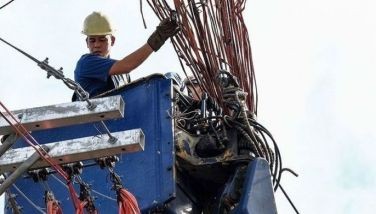Sustainable construction urged for PPP projects

MANILA, Philippines - With the Aquino administration bent on putting in place infrastructure projects that would spur economic development in the Philippines, real estate developers have raised the idea of making sustainable construction principles work for PPP projects.
PPP or public-private partnership (PPP) projects are infrastructure projects such as roads, bridges, schools, hospitals and mass transport lines which the government intends to build in partnership with private investors.
The concept of financing has already been established with the PPP principle. Under this concept, the government would be tying up with the private sector for the construction and operation of the project and split up for the revenues.
But there is also the aspect of the principles of construction that may be used for PPP projects.
Developers said the concept of sustainable construction might be used for the proposed PPP projects of the government.
Sustainable construction, said Megaworld Corp’s chief sustainability officer Macky Maceda, is building for a better world and at the same time coping with the challenges of the present world such as climate change.
And what better way to do this than in applying it in the construction of PPP projects.
‘We have to do two things for climate change. We must try to mitigate it and at the same time, adapting to it. As a developer, it is important to practice this especially in the building sector,” Maceda told The STAR.
Furthermore, Maceda said that 40 percent of carbon emissions in the world comes from buildings. The rest comes from transportation. Maceda stressed that buildings – because of their heavy consumption of electricity – contributes a lot to climate change.
It is thus important to make buildings as energy efficient as possible.
Green architecture is the way to go, Maceda said.
The government has at least 10 PPP projects in the pipeline this year and in 2012.
These include road projects, mass transport systems, schools, hospitals, airports and tollways.
Maceda said that whatever PPP project it is, the concept of sustainable construction may be applied.
“Whatever building it is, the same principle applies,” he said.
And there are different ways to do so.
Recycled rubber for roads
In the United States for instance, Maceda said that there’s a program from Nike where users are asked to bring in their old rubber shoes. The company breaks it down and the left over rubber soles are used in the ground mixture for tennis courts.
“This means that there’s recycled rubber that is used. That’s just an example. For roads, this can be applied also,” Maceda said.
Maceda said another technology that may be applied in PPP projects is solid waste conversion. He said that there are treated wastes that may be used in some road projects as filler.
“Instead of bringing your waste to a landfill, it goes to a facility, the inorganic portion is separated from the organic portion and you’re left with these particles. The fine particles are usually organic. One can make it into pellets and use it a substitute for charcoal. The bigger portions are mostly inorganic. These are the plastics. With proper treatment, these inorganic portions, mostly plastics can now be used in road projects as filler,” Maceda explained.
Lighting
In terms of lighting systems in PPP projects, Maceda said these could also be used.
He said that nowadays, there are now advances in lighting technology.
“Before it was incandescent. Now, there are CFLS or compact fluorescent lamps. Now, were moving into LEDs or light emitting diodes,” Maceda said.
These LEDs are the most energy efficient bulbs that may be used in PPP projects such as airports, schools, hospitals and other PPP buildings because they have lower energy consumption and longer lifetime.
Solar energy may also be used for street lighting, Maceda said.
“For street lighting, immediately what comes to mind are solar street lights. Each street light, there can be a small solar panel so it captures the energy during the day in a battery and that is what is used to power the light at night,” Maceda said.
In many European countries, there are a lot of public places such as airports, schools, government offices and other buildings that use automatic lighting systems. This means that the light goes on when there is a user inside the room and automatically goes off when the user goes out.
Water conservation
Maceda said there are water systems that help building owners conserve energy. These may be done in restrooms of PPP projects as wells.
“In the male restrooms, we now have waterless urinals, the way it works is that technology has been developed so that no flushing is needed anymore. For every water less urinal that you install, you’re saving about a hundred thousand litters of water a year,” Maceda explained.
Another way to conserve water is the use of rainwater.
“Some buildings may be designed so that it collects all the rainwater that lands on the property. There’s a cistern or a water tank,” Maceda said.
Benjamarie Serrano, president and chief executive officer of Vista Land Corp. said that recycled materials might also be used for slope protection.
In an interview with The STAR, Serrano said that developers participating in PPP projects of the government might also use coir in the construction of slope protection.
According to Wikipedia, coir is a natural fiber extracted from the husk of coconut and used in different products. It is the fibrous material the hard internal shell and the outer coat of a coconut.
“Sustainable construction (for PPP projects) can be done. It’s always good to do that. At least we are talking of sustainability,” Serrano said.
Maceda said that in the construction process itself, the construction crew should be energy efficient.
“If you’re not tapped into an electrical outlet, where do you get your electricity? Construction companies usually bring in their own generators but that use a lot of carbon output because they run on diesel. The best way is to plan the construction so that there is less use of generators,” Maceda said.
As a developer, Megaworld said that it makes its buildings as energy efficient as possible.
Bienvenido Gonzales, chief engineer of an international five-star hotel, said that for large-scale infrastructure projects, developers should also consider the site location of a construction because this has direct impact on the environment.
“For example, in roads and bridge construction, the route and the method of construction should protect the environment from noise pollution, unwanted soil erosion, flooding,” he said.
Other ways that developers for PPP projects may apply the principles of sustainable construction include the use of recycled materials for the construction; the use of energy efficient lamps and electrical devices and the use of heat pumps to heat water that reduces carbon emission.
Developers should also utilize natural lighting and natural ventilation and reduced air conditioning requirements, Gonzales said.
At the end of the day, the use of sustainable construction principles may incur additional costs but it would go a long way in protecting the environment especially for infrastructure projects that would be standing and in use for years.
- Latest
- Trending




























